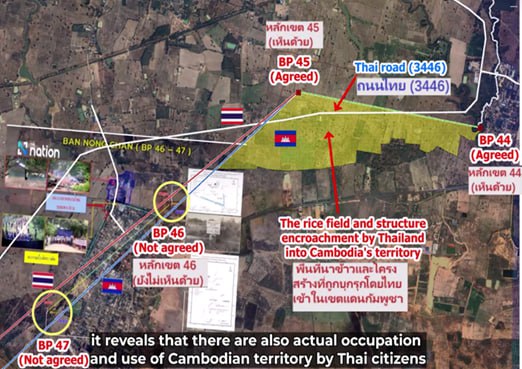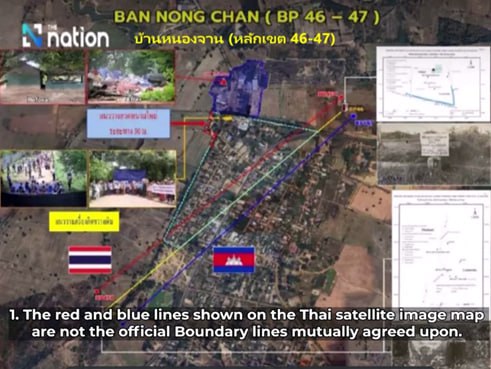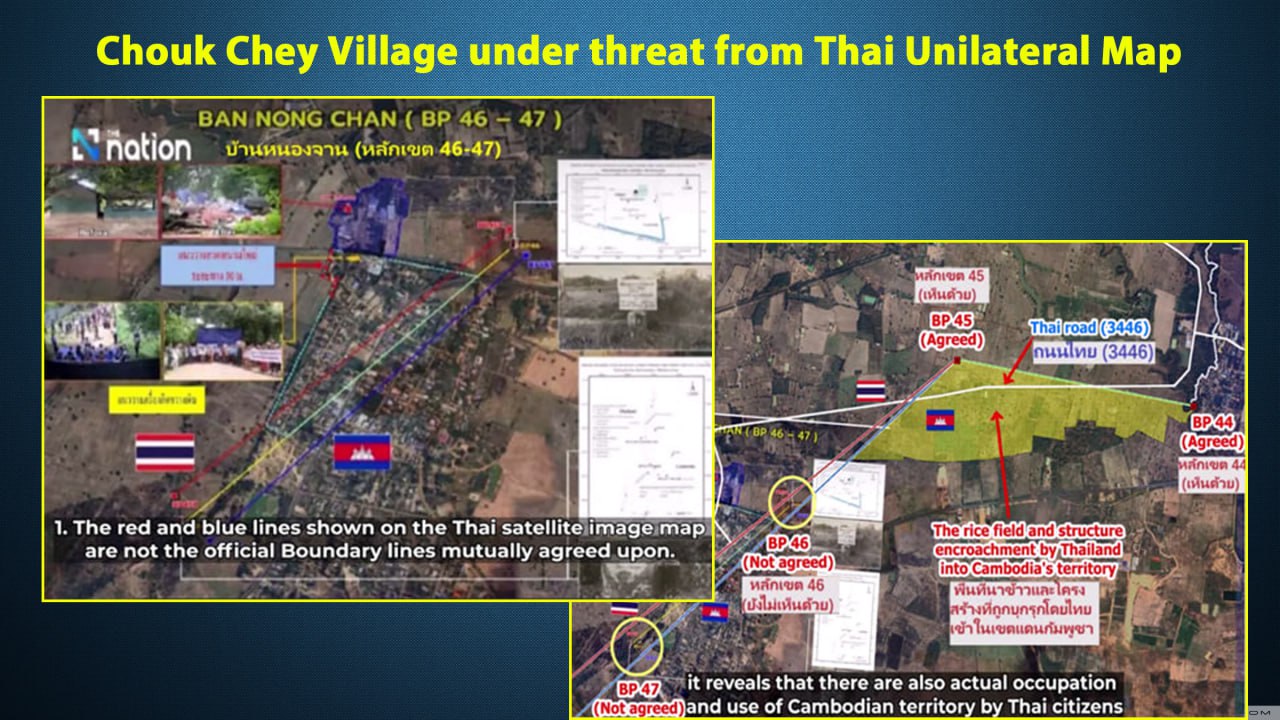Chouk Chey Village under threat from Thai Unilateral Map
The aide-memoire recently released by the Cambodian Ministry of National Defense sheds light on the ongoing territorial dispute between Cambodia and Thailand, particularly focusing on the Chouk Chey Village area in Banteay Meanchey Province. In an era where misinformation can easily spread, clarity and transparency are crucial, particularly when it concerns matters as sensitive as national sovereignty. This document serves a significant purpose, addressing misconceptions propagated by the Thai military and media with a firm stance of accountability.
With its inception grounded in a reference to previous clarifications, the aide-memoire establishes continuity, ensuring that the public understands this discourse is not a one-off statement but part of an ongoing dialogue about territorial integrity and national pride. The thorough layering of information cues us into the Ministry’s dedication to transparency, underscoring that clarity is a top priority in navigating this complex dispute.
At the heart of the document lies a resolve to counter what is perceived as misrepresentation by the Thai authorities. By challenging the claim that certain satellite images and boundary documents provide valid proof of territorial encroachment, the Cambodian government asserts its commitment to safeguarding national interests. It boldly states that the red and blue lines on the Thai maps were drawn unilaterally, a critical point that reminds us of the importance of mutual agreement in such matters. This unyielding stance raises important questions: When can diplomatic accountability prevail over unilateral claims?
Of particular note is the mention of Mr. Lay Siengly’s signature on documents that do not define boundary lines but only signify the location of boundary pillars. This nuanced differentiation is vital, serving to dismantle claims of mutual agreement and emphasizing the legitimacy of Cambodia’s critique. The Cambodian perspective is not only a matter of geographical correctness; it is a matter of narrative and public perception within the region and beyond.
The Ministry’s concerns regarding public misunderstanding are especially poignant. In an age where satellite images and diplomatic documents can be weaponized in the court of public opinion, misinterpretations run the risk of inflaming tensions further. Clarity is essential to fostering diplomatic relations as it is to maintaining national pride and public confidence.
Moreover, the aide-memoire’s assertion of actual occupation of Cambodian territory provides tangible evidence that strengthens Cambodia’s claims. This crucial point goes beyond academic debate – it’s rooted in the lived realities of citizens whose very identity ties them to these lands. By establishing this connection, Cambodia reinforces its stance, demonstrating that sovereignty is continuous and cannot simply be erased by unilateral re-drawing of maps.
The formal tone of this aide-memoire appropriately mirrors its serious nature, evoking authority and credibility. The technical language reinforces the Ministry’s standing as a knowledgeable body dedicated to the accuracy of the information it disseminates. Such rigor reflects the pressing need for correct information amidst the complexities that often accompany territorial disputes.
Ultimately, this aide-memoire is more than a mere defense against allegations of territorial encroachment; it is a spirited affirmation of Cambodia’s rights to the Chouk Chey area. As the situation unfolds, the Ministry’s proactive measures to inform the national and international public will not only bolster domestic support but lay the groundwork for future diplomatic negotiations. Clarity and commitment to territorial integrity must reign in discussions that shape the region’s future. Only with open dialogue and accurate representations can Cambodia and Thailand hope to move towards a peaceful resolution that respects the sovereignty of all nations involved.
By Syafiq Irfan bin Abdullah, Journalist



